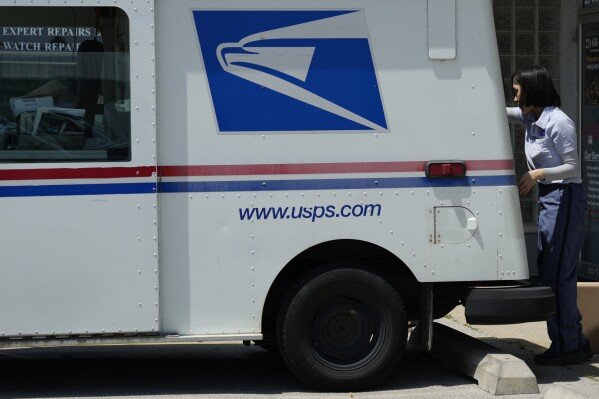Date: March 26, 2025
The United States Postal Service (USPS) is grappling with a severe financial crisis as it faces mounting challenges to modernize its operations and cope with the rising demand for package deliveries. Although the USPS is an essential service for millions of Americans, providing mail delivery to every U.S. address six days a week, its ability to maintain operations has been hindered by financial instability, aging infrastructure, and the increasing reliance on e-commerce shipments.
Financial Losses Continue to Mount
For the fifth consecutive year, the USPS reported significant financial losses. In its most recent annual report, the postal service recorded a net loss of $9.2 billion for the 2024 fiscal year. This follows a $6.9 billion loss in 2023 and reflects a persistent trend that has raised concerns among lawmakers and postal workers.
The losses come despite an uptick in package deliveries, which have become a lifeline for the postal service in the era of online shopping. E-commerce giants such as Amazon, eBay, and Walmart have shifted a considerable portion of their parcel deliveries to USPS, driving up volume in recent years. However, the increased demand has not translated into financial sustainability.
“While our package business has grown, it’s not enough to offset our declining revenue from traditional mail,” said Postmaster General Louis DeJoy in a statement last week. “The USPS continues to face severe financial challenges that must be addressed immediately to ensure the continued delivery of mail and packages for the American public.”
Revenue from Mail Decline
Mail volumes, particularly first-class mail, have been steadily declining for over a decade. The shift to electronic communications, such as email and digital billing, has drastically reduced demand for traditional postal services. First-class mail, which once accounted for nearly 40% of USPS revenue, now contributes less than a quarter of its total income. The decline has accelerated in the wake of the COVID-19 pandemic, as many people turned to digital services for nearly all of their communication and shopping needs.
In contrast, package deliveries have seen a rise due to the growth of e-commerce. However, USPS faces stiff competition from private couriers like FedEx and UPS, who are better equipped with modern infrastructure and advanced technologies to meet the demands of today’s logistics market.
Efforts for Reform and Modernization
In response to these financial strains, the USPS has been pushing for reforms aimed at modernizing its operations and cutting costs. One of the key proposals has been the replacement of its aging fleet of delivery trucks. The current postal fleet consists largely of outdated vehicles that are inefficient, costly to maintain, and polluting.
To address this, the USPS has entered into a multi-billion dollar contract with Oshkosh Defense to build a new generation of delivery vehicles, with plans to roll out 50,000 new trucks by 2028. The new vehicles are expected to improve fuel efficiency and reduce maintenance costs, but concerns about the environmental impact of the trucks persist.
Additionally, USPS has been exploring alternative revenue streams. In late 2024, the service launched a pilot program offering banking services at select locations, including the ability to deposit checks, transfer funds, and pay bills. This move is part of a broader strategy to diversify services and tap into new revenue sources.
Legislative Response
The financial challenges faced by the USPS have prompted calls for federal intervention. Lawmakers have expressed concern about the viability of the service and its ability to continue providing universal mail delivery at affordable rates.
In December 2024, the U.S. Congress introduced a bipartisan bill aimed at stabilizing the financial position of the USPS. The bill includes provisions for reducing pension liabilities, which have been a significant burden on the service’s finances, as well as a $10 billion infusion of federal funds to modernize infrastructure and expand service offerings.
Rep. Carolyn Maloney, a Democrat from New York, who co-sponsored the bill, emphasized the importance of the USPS as a public service. “The postal service is a critical lifeline for millions of Americans, especially in rural areas,” she said. “We cannot allow it to fail.”
However, critics argue that the USPS needs to fundamentally restructure its operations and business model to adapt to the realities of the digital age. “Bailing out the USPS without addressing its core inefficiencies would be a waste of taxpayer dollars,” said Rep. James Comer, a Republican from Kentucky. “Reform is necessary, but it must come with accountability.”
The Future of USPS in the Digital Age
Despite its financial struggles, the USPS remains an integral part of the American economy. It is the only entity capable of providing mail service to every U.S. address, regardless of location, and plays a key role in the distribution of goods, particularly for rural Americans who may not have access to private delivery services.
However, the rise of digital communication and e-commerce means that the USPS must evolve to survive. Experts suggest that the future of postal services may lie in offering a broader range of services, from digital deliveries to local package collection points, as well as exploring partnerships with private companies.
“The USPS needs to think outside the envelope,” said industry analyst Lisa Granger. “The service has been slow to innovate, but the world has changed. The future of the USPS will depend on how well it can adapt to new technologies and customer needs.”





